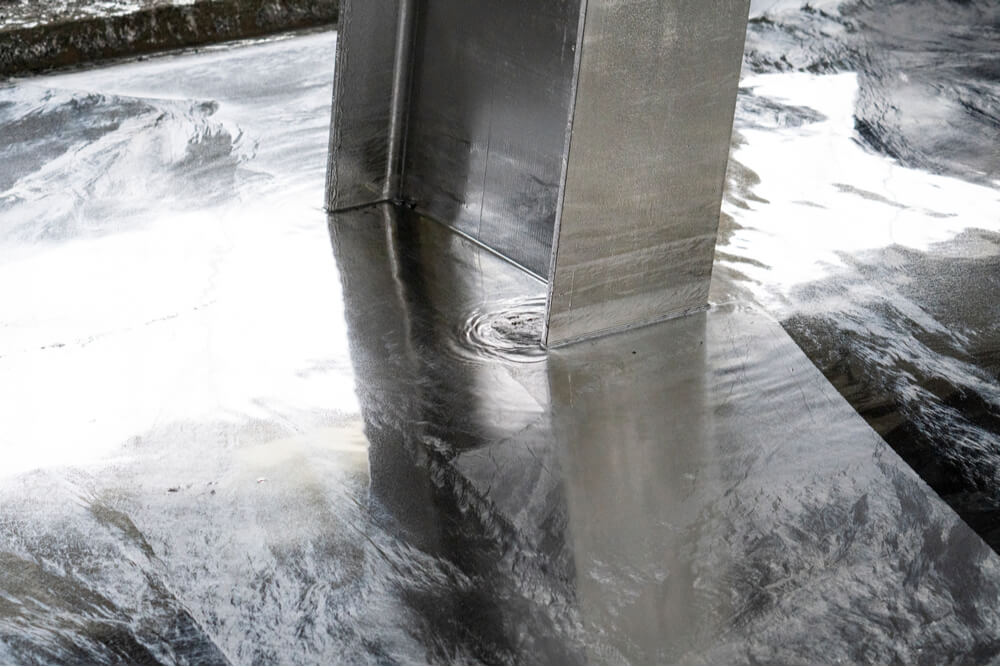Why Galvanizing Your Steel is Important
Steel is valued for its strength and low production cost compared to other metals. However, if left untreated when exposed to certain environments (particularly those outdoors), it can rust and degrade. Rust is a type of corrosion that ultimately weakens the steel, making it a major safety concern for countless industries. Galvanizing is a critical solution to this problem, and is widely used across many industries. If you have a project where steel will be exposed to the elements (or other corrosive factors like chemicals), galvanizing is a necessity for the longevity of the steel. Thankfully, galvanizing — especially hot-dip galvanization — is surprisingly cost-effective and has a very quick turnaround. Ensure the durability and reliability of your steel products with Service Steel today!
Hot-Dip Galvanizing Steel
We galvanize steel by immersing products in a bath of molten zinc, which produces a multi-layered coating of zinc metal and zinc-iron alloy to encourage corrosion resistance. Referred to as hot-dip galvanizing, this process has been employed since the 18th century to provide enduring, low-maintenance protection from rust at a reasonable cost. Steel galvanizing involves a rather simple process, which makes it more advantageous compared to other methods for corrosion durability and protection. Talk to one of our experts or request a quote today!

GALVANIZING FAQS
A galvanized coating on metal acts as a barrier against environmental conditions that would otherwise degrade the metal underneath. This galvanized coating is also metallurgically bonded to the piece of metal, meaning that it lasts much longer than other types of coats such as paint.
Zinc can be applied to steel as a protective coating to discourage rusting. This prevents oxygen and water from reaching the steel beneath by forming a layer of zinc-iron alloy on the surface, which turns into zinc carbonate when it reacts with moisture in the air. Galvanized steel resists corrosion far longer than painted steel but will still degrade slowly over time.
If not done properly, welding galvanized steel can be dangerous due to vaporized zinc mixing with oxygen to form zinc oxide fumes, which can result in flu-like symptoms. Welding galvanized steel can be done by a skilled welder by removing the zinc from the area being welded.
In cases where a different visual aesthetic is desired, galvanized steel can be painted with most acrylic paints. Reasons for painting galvanized steel can range from design preference to safety measures.
Hot-dip galvanizing offers superior long-term durability compared to painted finishes. While the initial cost of galvanizing may be higher than simple paint, it provides a maintenance-free, corrosion-resistant coating that can last 20 to 50 years in most environments (and up to 75 years or more in less corrosive settings). In contrast, painted finishes typically require maintenance every 5 to 7 years, leading to higher cumulative costs over time.
Yes. Industry-standard hot-dip galvanizing processes ensure consistent coating thickness and uniform coverage across all structural components. Our experienced team monitors each batch to maintain quality control, ensuring that your steel products meet the required specifications for durability and performance.
Environmental factors significantly influence the lifespan of galvanized steel. In rural areas with low pollution, galvanized coatings can last 50 years or more. However, in coastal or industrial environments with higher humidity and corrosive elements, the lifespan may be reduced to 15 to 25 years.
Exposure to temperatures above 400°F can compromise the integrity of the galvanized coating. At these elevated temperatures, the zinc layer may begin to degrade, leading to a loss of corrosion resistance and potential structural issues. It’s crucial to consider the operating environment and temperature conditions when specifying galvanized steel to ensure its suitability and longevity.
Yes. Bundling galvanizing with our other services such as saw cutting, bending, or flame cutting can offer significant cost advantages. By consolidating services, you can reduce handling and transportation costs, minimize lead times, and streamline project management. We provide comprehensive steel processing services, allowing you to receive fully customized and ready-to-install components, enhancing efficiency and reducing overall project expenses.